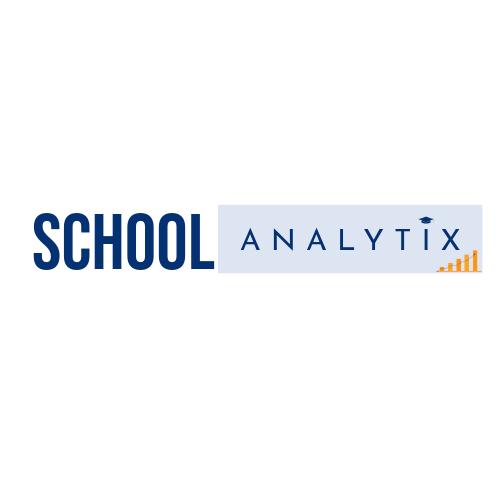In today’s data-driven world, educational institutions are increasingly recognizing the importance of leveraging data to improve decision-making, enhance student outcomes, and optimize resource allocation. A comprehensive data model serves as the foundation for organizing, analyzing, and interpreting diverse sources of data within educational institutions. This detailed article explores the key components, benefits, challenges, and best practices for building a comprehensive data model tailored to the unique needs and objectives of educational institutions.
Understanding the Components of a Comprehensive Data Model: A comprehensive data model for educational institutions encompasses a wide range of components, including:
Student Information: Student information serves as the cornerstone of the data model and includes demographic data (e.g., age, gender, ethnicity), enrollment history, academic records (e.g., grades, courses, transcripts), attendance records, disciplinary incidents, and special education status.
Faculty and Staff Information: Faculty and staff information comprises data related to educators and administrative staff, including qualifications, certifications, teaching assignments, professional development history, performance evaluations, and employment status.
Curriculum and Instructional Data: Curriculum and instructional data encompass information about courses, instructional materials, curriculum standards, assessments, lesson plans, teaching methodologies, and learning resources used within the institution.
Assessment and Evaluation Data: Assessment and evaluation data include results from standardized tests, formative and summative assessments, proficiency levels, student growth measures, and program evaluations conducted to measure student progress and performance.
Financial and Resource Data: Financial and resource data cover budget allocations, expenditure tracking, funding sources, grants, donations, facilities management, equipment inventory, and other financial transactions and resources utilized by the institution.
Engagement and Communication Data: Engagement and communication data capture interactions between stakeholders, including students, parents, educators, and administrators, through communication channels such as emails, newsletters, surveys, meetings, and social media platforms.
Benefits of a Comprehensive Data Model: Building a comprehensive data model for educational institutions offers several benefits, including:
Informed Decision-Making: A comprehensive data model provides stakeholders with timely, accurate, and actionable insights to inform strategic planning, policy development, resource allocation, program evaluation, and intervention strategies aimed at improving student outcomes and institutional effectiveness.
Personalized Learning and Support: By analyzing student data, educators can identify individual learning needs, preferences, strengths, and challenges and tailor instruction, interventions, and support services to meet the diverse needs of students, fostering personalized learning experiences and academic success.
Predictive Analytics and Early Intervention: Leveraging predictive analytics techniques, educational institutions can identify patterns, trends, and indicators of student success or risk factors for academic failure, allowing for early intervention, targeted support, and prevention strategies to address potential challenges and promote student retention and graduation.
Resource Optimization and Efficiency: By analyzing financial, operational, and performance data, educational institutions can optimize resource allocation, streamline administrative processes, identify cost-saving opportunities, and enhance operational efficiency, maximizing the impact of available resources on student learning outcomes.
Continuous Improvement and Accountability: A comprehensive data model facilitates ongoing monitoring, evaluation, and assessment of educational programs, initiatives, and outcomes, enabling continuous improvement efforts and accountability measures to ensure alignment with institutional goals, standards, and benchmarks.
Challenges in Building a Comprehensive Data Model: Building a comprehensive data model for educational institutions is not without challenges, including:
Data Integration and Quality Assurance: Integrating disparate data sources from multiple systems and platforms and ensuring data accuracy, consistency, completeness, and reliability require robust data integration, cleansing, validation, and quality assurance processes.
Privacy and Security Concerns: Safeguarding student privacy, confidentiality, and data security, complying with privacy regulations (e.g., FERPA, GDPR), and implementing appropriate data governance policies and security measures to protect sensitive information are paramount considerations in data modeling.
Technical Infrastructure and Capacity: Establishing the technical infrastructure, hardware, software, tools, and expertise necessary to support data collection, storage, processing, analysis, visualization, and reporting capabilities poses challenges for educational institutions with limited resources and technical expertise.
Change Management and Culture Shift: Overcoming resistance to change, fostering a data-informed culture, building capacity for data literacy and analytical skills among stakeholders, and promoting buy-in and collaboration across departments and organizational levels require effective change management strategies and leadership commitment.
Best Practices for Building a Comprehensive Data Model: To overcome these challenges and maximize the benefits of a comprehensive data model, educational institutions can adopt the following best practices:
Define Clear Objectives and Use Cases: Start with clearly defined objectives, priorities, and use cases for data modeling efforts aligned with institutional goals, strategic priorities, and stakeholder needs to ensure relevance and effectiveness.
Engage Stakeholders and Build Partnerships: Involve diverse stakeholders, including administrators, educators, students, parents, IT staff, and community members, in the data modeling process to gather input, solicit feedback, and build partnerships for collaboration and support.
Prioritize Data Governance and Quality: Establish data governance structures, policies, and procedures to govern data management practices, ensure data integrity, compliance, and security, and promote accountability, transparency, and ethical use of data.
Invest in Infrastructure and Resources: Allocate resources, funding, and technical support to develop and maintain the necessary infrastructure, tools, technologies, and expertise for data modeling, analysis, and utilization, including investments in data warehouses, analytics platforms, and professional development.
Promote Data Literacy and Training: Provide ongoing training, professional development, and support to enhance data literacy, analytical skills, and capacity-building among educators, administrators, and staff to empower them to leverage data effectively for decision-making and practice.
Iterate and Adapt: Continuously iterate, refine, and adapt the data model based on feedback, evaluation, and evolving needs, technologies, and priorities to ensure its relevance, accuracy, and usability over time.
Conclusion:
Building a comprehensive data model for educational institutions is a complex yet rewarding endeavor that can transform decision-making, enhance student success, and drive institutional improvement. By leveraging data effectively, educational institutions can gain actionable insights, personalize learning experiences, optimize resources, and foster a culture of continuous improvement and innovation. However, success requires strategic planning, stakeholder engagement, investment in infrastructure and capacity-building, and a commitment to ethical, responsible, and transparent use of data to maximize its potential to advance educational goals and outcomes.
